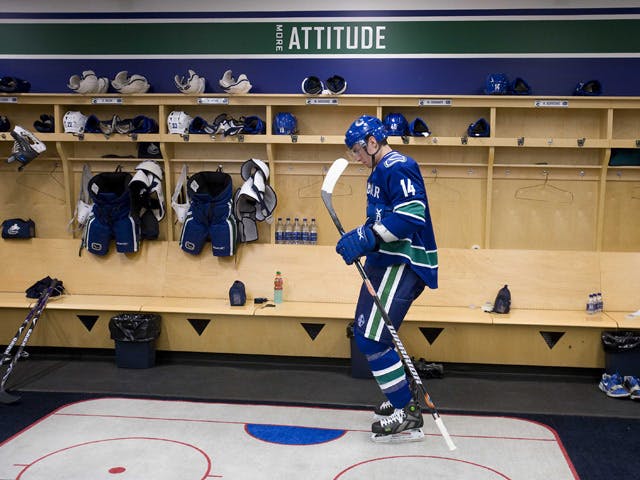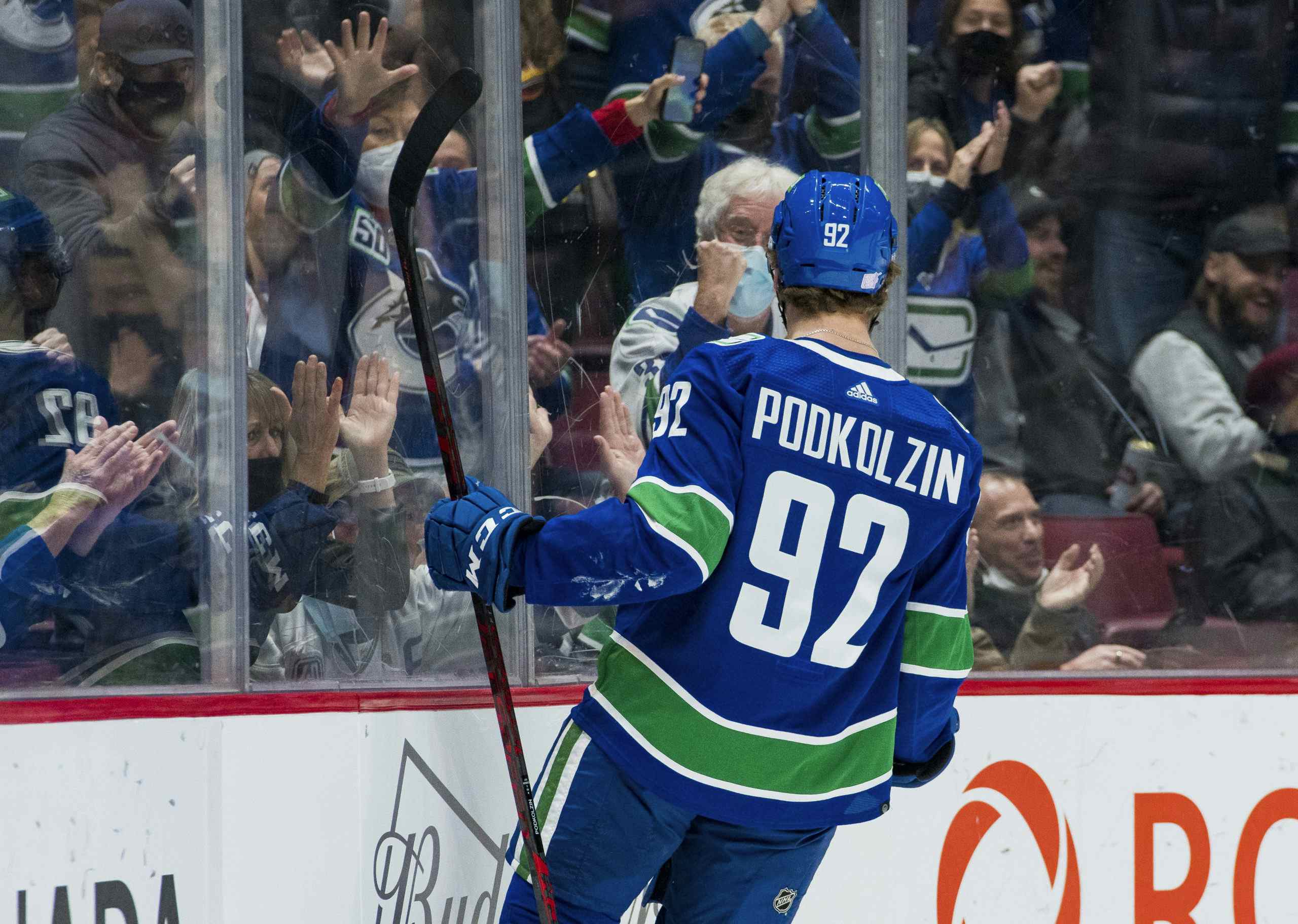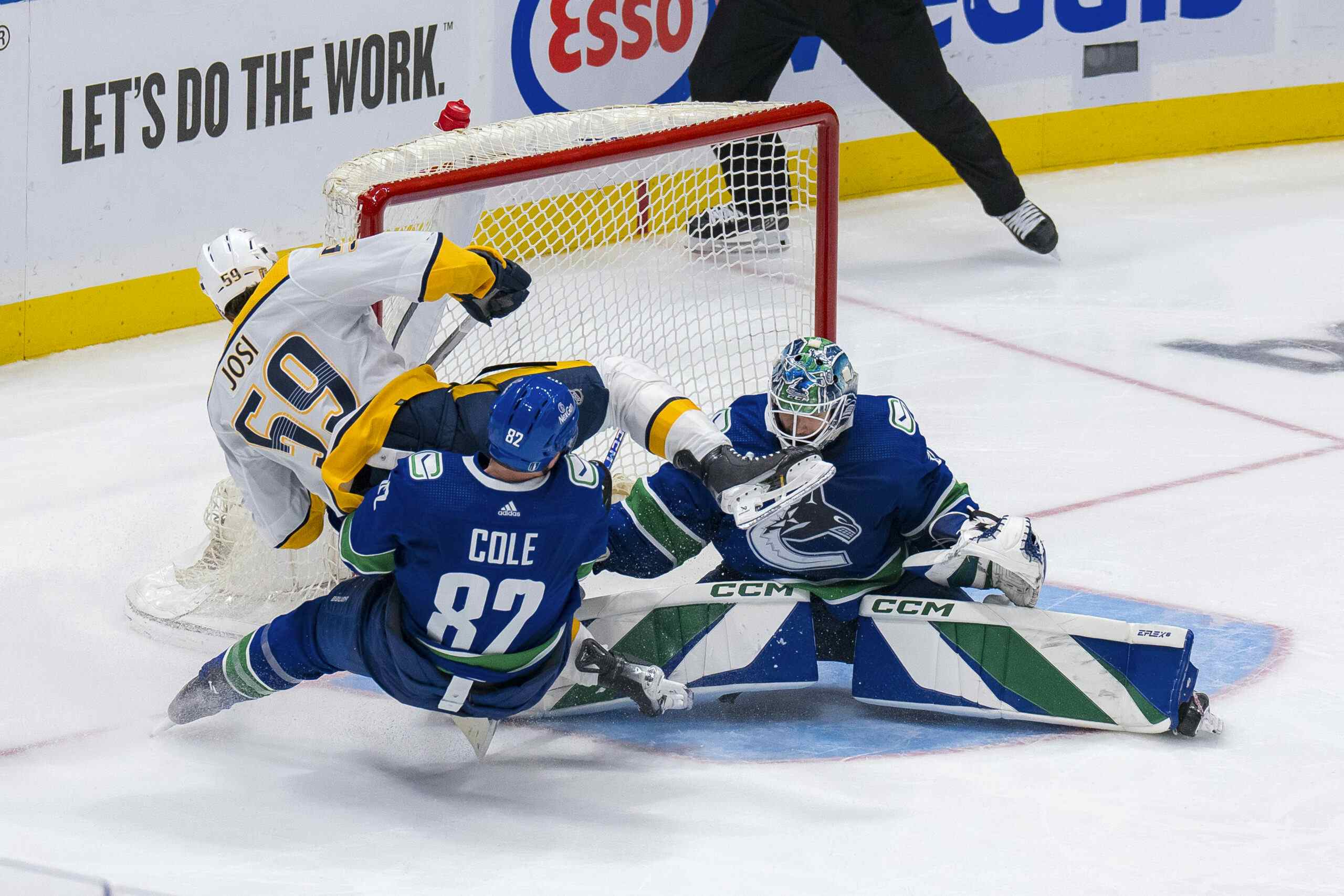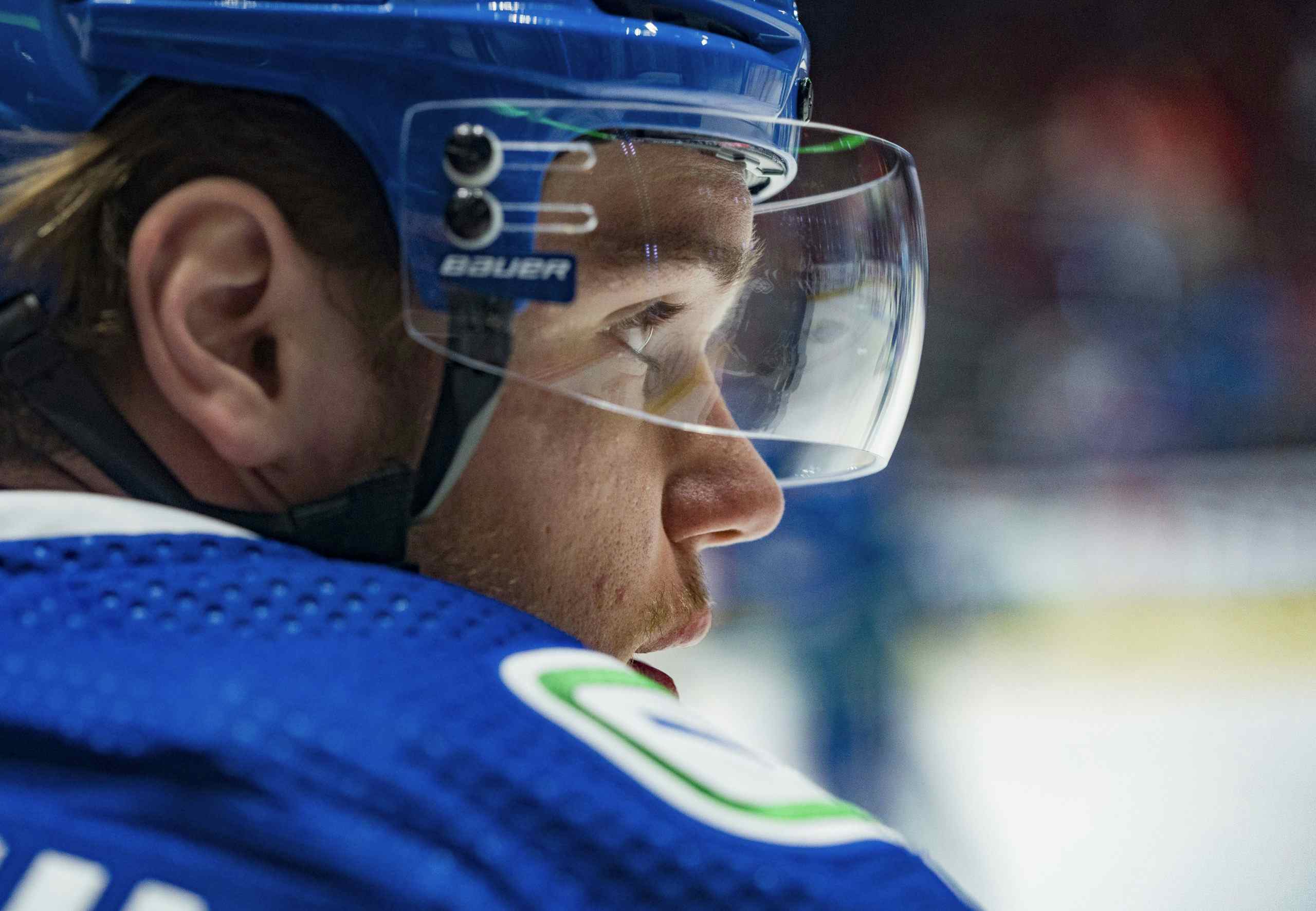Alex Burrows is Crushing it Defensively this Season
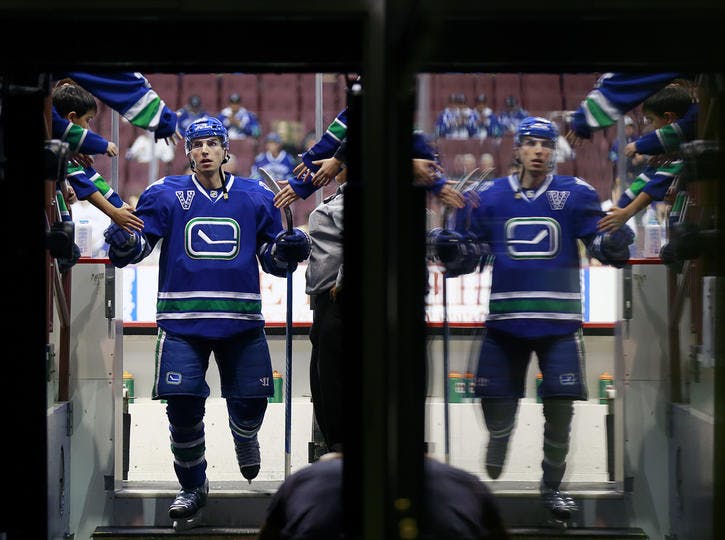
There’s another side to Alex Burrows beyond the plethora of even-strength goals: his stellar defense.
Photo Credit: Jeff Vinnick via NHLI
The Frank J. Selke Trophy – awarded to the NHL’s best defensive forward every season, as you probably know – is kind of like a Gold Glove in baseball: it tells us more about a player’s reputation that it does about their real defensive utility.
Consider the example of Ryan Kesler, unquestionably one of the league’s best two-way players over the past five seasons. For years Ryan Kesler was Vancouver’s primary defensive ace, and a deserving Selke nominee (even winner). That was true up until 2010-11 when Kesler was deployed in a calibrated offensive role by Vancouver’s coaching staff. With Manny Malhotra soaking up the toughest matchups, the most short-handed ice-time among all Canucks forwards, and the bulk of defensive zone draws – Kesler took advantage and scored forty goals on his way to winning, ironically, the Selke.
It’s telling that Ryan Kesler, a defence-first forward for the majority of his career, finally won the award for "best defensive forward" in the NHL during the one season in his career that he had the least defensive responsibility. Anyway, one guy who won’t be considered for the Selke this season, and who probably shouldn’t be despite being an absurdly effective defensive presence all year, is Alex Burrows. We’ll elaborate on the other side of the jump.
Matchups
Among all Canucks forwards this season, Alex Burrows has faced the toughest matchups at even-strength. While this is, in part, a product of skating regularly with the Sedin twins – who have done some serious heavy lifting this season, and succeeded in carrying a one-line team in Ryan Kesler’s absence – it’s also a reflection of circumstance.
You might recall early in the season, Alex Burrows spent a handful of games playing centre (seven of them in a row to be exact, though he’s played about ten games at centre in total). Alongside Chris Higgins and Jannik Hansen primarily, Burrows helped the Canucks hold the fort and bank a whole whack of standings points while playing out of position and facing difficult matchups. That’s impressive stuff.
Since then, whenver a line was struggling – like the Andrew Ebbett, Keith Ballard third line that played together for four games in late March – Alex Burrows appeared to join that group within four periods or so. For example the Ballard-Ebbett line started out with Dale Weise on their right wing against Phoenix. They didn’t play all that well. Then they skated with Chris Higgins against Los Angeles, and again that line didn’t play that well. Finally Alex Burrows was bumped down the lineup to help them out, and they became serviceable in a couple of Canucks victories over Colorado and Columbus.
Alain Vigneault has presumably had to wrestle all season with this conundrum. While the top-line is significantly better at both ends of the rink when Alex Burrows is skating with the twins, the Canucks have been a one line team all season and occassionally it must have been tempting to bump Burrows down the lineup in an attempt to "fatten" the club’s depth…
My point here is that Alex Burrows has emerged as an all-purpose utility forward this season. He’s managed to hold his own with limited support against tough matchups and he’s also spent a good deal of time as a centreman this season, especially on the penalty-kill.
The Burrows Effect
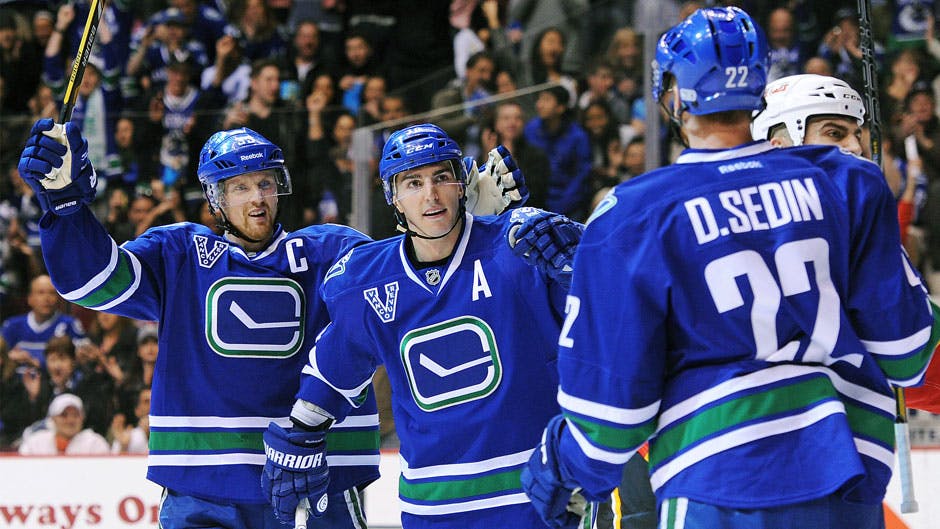
Photo Credit: Derek Leung/Getty Images
In the past we’ve pointed out at length that the Sedin twins give up fewer scoring opportunities and goals against when Alex Burrows is skating on their right-wing. This season that’s been the case again, though the extent to which Alex Burrows has contributed to the standard Sedin habit of control play has been even more pronounced.
Over the past five seasons, for example, the Canucks have given up a shade over three additional shot attempts against per sixty minutes of even-strength ice-time with Henrik Sedin on the ice without Alex Burrows, as they have when Henrik and Alex Burrows skate together. This season, the number of additional shot attempts against that the Canucks permit with just Henrik and not Alex Burrows on the ice in comparison with when they skate together, is closer to five additional events per sixty minutes. The number of shot attempts the Canucks have surrendered this season goes up to seven per sixty minutes if you run Alex Burrows’ "with or without you numbers" with Daniel instead of Henrik.
Up until the past week and a half, the Canucks have been a one-line team who were extremely reliant on stellar goaltending and suffocating defensive play. That’s the formula that has allowed Vancouver to keep pace in the murderer’s row Western Conference despite being ravaged by injury locusts all season. Burrows’ presence has been critical in making Vancouver’s one threatening line a serious two-way power house all season long.
Results
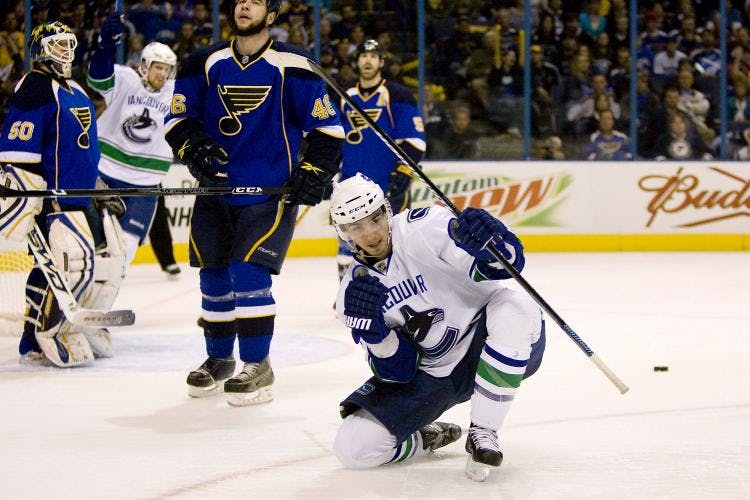
Photo Credit: Dilip Vishwanat/Getty Images
How’s this for results – in one goal games this season, or in a "score close game state," the Canucks have scored twenty-two goals with Alex Burrows on the ice and allowed only five against. While that figure is driven in large sum by the percentages (Alex Burrows has a 107.7 score-close PDO), the underlying numbers are mind-blowing as well as Burrows boasts a 58% Corsi For percentage in one goal games this season.
Coincidentally the Canucks as a team are, like Burrows, +17 in goal differential in a score close game state…
Conclusion
Obviously Alex Burrows isn’t a serious Selke nominee, in part because only centreman win the Selke these days, or even earn Selke nominations in the first place (though Gabriel Landeskog will change that some day soon).
Not only will Burrows not earn much in the way of Selke buzz this spring, but he shouldn’t if we’re being realistic (my top-five if I had a vote: Patrice Bergeron, David Backes, Saku Koivu (seriously), Pavel Datsyuk and Kyle Brodziak). After all, Burrows still has an offensive zone start rate in the mid-sixties so his deployment has a significant offensive bias to it, and as a winger (most of the time) he does have less defensive responsibility, even if he’s the driving defensive force on Vancouver’s top-line…
But Burrows has performed like an elite defensive forward all season long, even when playing out of position and over his head as a centreman. Forget the awards or the potential glory, that Burrows is having the best defensive season of his career is something that is well worth pointing out.
Recent articles from Thomas Drance

